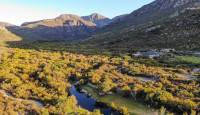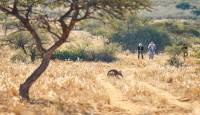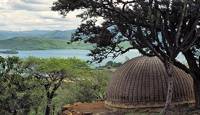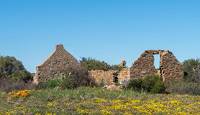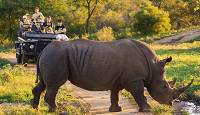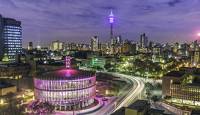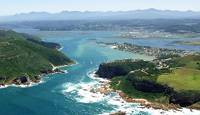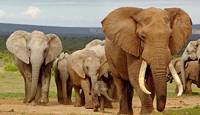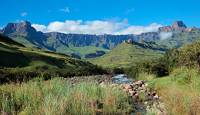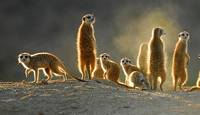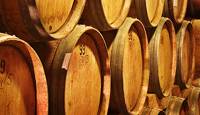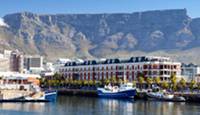Johannesburg
A popular destination for business-related South Africa travel, Johannesburg is situated on the Transvaal Highveld, 5751 feet above sea level, and is the largest city and the commercial and financial centre of South Africa. The city came into being when gold was discovered in 1886, since then it has grown from a shanty town to a modern sophisticated city. Johannesburg is the main gateway to the major tourist regions of Southern Africa. Points of interest vary from the affluent northern suburbs to the hustle and bustle of Hillbrow in the city centre to the world famous town of Soweto (SOuth WEstern TOwnship). Soweto is the largest black residential area in South Africa. This sprawling “city within a city” essentially acts as a labour reservoir for the greater metropolitan area of the Witwatersrand. In many ways, the story of Soweto is the story of South Africa. Major points of interest in Soweto include Chris Hani Baragwanath Hospital, Baragwanath taxi rank, Freedom Square, Hector Peterson Memorial and Nelson Mandela’s former home.
Gold Reef City is another South Africa travel destination. The city that was founded way back in 1886 as a miner’s village on the Witwatersrand goldfields, which grew into what Johannesburg is today. The Gold Reef City theme park and museum is built around the original No.14 shaft of Crown Mines. It is a recreation of Johannesburg as it was during the early days of the gold rush. Guided tours on offer include an underground visit 220 metres below the surface, a gold pour and tribal dancing, providing the visitor with an in-depth look at the gold mining industry in South Africa.
Pretoria
Although Pretoria lies only 58 km (36 miles) north of Johannesburg, South Africa’s administrative capital provides a complete contrast to Johannesburg, the City of Gold. The city was founded in 1855 and named after the Voortrekker leader, Andries Pretorius. Often referred to as the “Jacaranda city”, this nickname refers to the thousands of trees lining the streets, their purple blossoms heralding the approach of summer each October. Some points of interest in Pretoria are the Voortrekker Monument, a striking memorial built to honour the early pioneers; the Kruger House Museum; and Church Square in the centre of the city, where the statue of Paul Kruger looks down on the passers by. The imposing Union Building, which houses the office of the State President, provides an impressive view over the city. Your South Africa tour operator will be able to give you information with regard to further tourist attractions in and around Pretoria.
Cape Town
Cape Town is the oldest city in South Africa. With Table Mountain as a dramatic backdrop, it is one of the most beautiful cities in the world. It was founded in 1652 as a victualling station for ships of the Dutch East India Company on their way to and from the East. It has now grown into a modern complex, with its suburbs, busy harbour of Table Bay, fishing villages, extensive vineyards, a spectacularly beautiful marine drive, innumerable beaches along its two shorelines, several nature reserves, including Cape of Good Hope Reserve, Kirstenbosch Botanical Gardens and the newly developed Waterfront district. A safari in South Africa simply wouldn’t be complete without a visit to the Mother City, as the city is affectionately called by her inhabitants.
Durban
Durban, the holiday city, offers a subtropical climate, endless summers, an effervescent ocean lined with golden beaches and thousands of pleasure options. When you’re not playing golf, fishing or lying on the beach, you can visit a crocodile farm, a nature reserve or follow an arts and crafts trail. It is a city full of colour, bustle and excitement with gleaming seafront hotels and miles of golden beaches edging the Indian Ocean. South Africa accommodation in Durban often boasts incredible ocean views. A short flight or drive will take you to historic Pietermaritzburg, gateway to the Natal Midlands and the charming Drakensberg.
Game Reserves and Nature Reserves
Kruger National Park
The first ever national game park in South Africa, the Kruger National Park covers an area of over 12 000 square miles of the Eastern Transvaal bushveld - the natural habitat of hundreds of species of animals and birds. Lion, elephant, cheetah, giraffe, wildebeest, impala, waterbuck, crocodile, baboon, zebra, and a large number of antelope are some of the animals often spotted in a day’s game viewing. Bird-watching is excellent with lilac-breasted rollers, vultures, hornbills and secretary birds to name a few. The park’s rest camps provide comfortable accommodation in huts and chalets and most of the camps have restaurants and curio shops.
Just bear in mind that you will need to be in the park before the gates close for the evening, as well as through the gates for your camp. Paul Kruger Gate opens at 05h30 and closes at 18h30. Recently a number of private concessions within the Kruger Park’s boundary have been awarded to successful tenders from the private sector. These concessionaires have built upmarket and exclusive game lodges that compete with the private game reserves on its boundary such as the Sabi Sands Game Reserve and Timbavati Private Nature Reserves, which provides upmarket South Africa accommodation for discerning travellers.
Hluhluwe Game Reserve
The Hluhluwe Game Reserve is one of the oldest South Africa game parks. It covers an area of 23 067 hectares and is linked to the nearby Umfolozi Game Reserve. The reserve is a stronghold for White Rhinoceros, but a wide range of other animals do occur such as lion, elephant, hippo, buffalo, leopard, the elusive cheetah, wild dog and other bushveld species. It has 1 rest camp situated in the north of the reserve by the name of Hilltop Camp. Hilltop rest camp is situated high on the edge of a steep forested slope and commands breathtaking views of the surrounding hills and valleys. Accommodation ranges from luxury chalets fully contained and those non self-catering.
Kgalagadi Transfrontier Park
Where the red dunes and scrub fade into infinity and herds of gemsbok, springbok, eland and blue wildebeest follow the seasons, where imposing camel thorn trees provide shade for huge black-mane lions and vantage points for leopard and many raptors… this is the Kgalagadi Transfrontier Park. The Kalahari Gemsbok National Park in South Africa was proclaimed in 1931 mainly to protect migratory game, especially the gemsbok. Together with the adjacent Gemsbok National Park in Botswana, this South Africa game park comprises an area of over 3,6 million hectares - one of very few conservation areas of this magnitude left in the world. Red sand dunes, sparse vegetation and the dry riverbeds of the Nossob and Auob show antelope and predator species off at a premium and provide excellent photographic opportunities. Kgalagadi could be considered a haven for birders especially when interested in birds of prey. Kgalagadi (SA) has six different camps of varying size, facilities and cost. Three traditional rest camps that have a basic shopping facility and fuel are situated on the South African side of the Park. Kgalagadi is the first Park to provide South Africa accommodation in three wilderness camps that, with no fences, invite the Kalahari and the tranquillity of Africa right into your room! The rest camps are Twee Rivieren, Mata Mata and Nossob.
Augrabies National Park
The Khoi people called it ‘Aukoerebis’, the place of the Great Noise, referring to the Orange River thundering its way downwards for 60 metres in a spectacular waterfall. Picturesque names such as Moon Rock, Ararat and Echo Corner are descriptive of this rocky region, characterised by the 18 kilometre abyss of the Orange River Gorge and craggy outcrops dominating scrub-dotted plains. Klipspringer and kokerboom (quiver trees) stand in stark silhouette against the African sky, silent sentinels in a strangely unique environment where only those that are able to adapt ultimately survive. The 28 000 hectares on both the northern and southern sides of the Orange River provide sanctuary to a diversity of species, from the very smallest succulents, birds and reptiles to springbok, gemsbok and the endangered black rhino. There is one rest camp at this South Africa game park, called Augrabies Restcamp, which consists of four-bed family cottages, two bedrooms, bathroom (bath), air-conditioning and an equipped kitchen; Bungalows (3 or 4 persons), bathroom (shower), air-conditioning and an equipped kitchen and two three-bedded bungalows have been adapted for handicapped persons.
Cape Peninsula National Park
Lying at the south-western tip of Africa, the Cape Peninsula National Park encompasses the incredibly scenic Peninsula mountain chain stretching from Signal Hill in the north to Cape Point in the south - a distance of approximately 60 km. The narrow finger of land with its many beautiful valleys, bays and beaches is bound by the waters of the Atlantic Ocean in the west and the warmer waters of False Bay in the east. It has within its boundaries two world-renowned landmarks – the majestic Table Mountain and the legendary Cape of Good Hope. These were both important beacons for the early explorers. Many myths and legends have sprung from them. Recognised globally for its extraordinarily rich, diverse and unique flora, this singular land formation - with rugged cliffs, steep slopes and sandy flats - is a truly remarkable natural, scenic, historical, cultural and recreational asset both locally and internationally. Nowhere else in the world does an area of such spectacular beauty and such rich bio-diversity exist almost entirely within a metropolitan area - the thriving and cosmopolitan city of Cape Town. This is a must on any South Africa travel itinerary.
Pilanesberg Game Reserve & Sun City
Situated in the North West Province, just over an hour and a half’s drive from Johannesburg, the Pilanesberg Game Reserve offers the visitor who has limited time in the country a Big 5 game reserve that is close to Johannesburg and is malaria free. It has all the major mammals as well as some of the rare species such as wild dog and brown hyena. On its southern boundary (outside the reserve) is the famous Sun City Resort, complete with all market accommodation and leisure options. It has a wide range of sporting facilities of every description and is host to the Million Dollar Golf Challenge as well as championship boxing, casinos, cinemas, excellent restaurants and star studded extravaganzas. A visit to the casino is a good accompaniment to a South Africa wildlife safari.
Greater St Lucia Wetlands Park
The Greater St Lucia Wetland Park, KwaZulu-Natal’s coastal World Heritage Site, is an extensive array of natural lakes along the north-eastern coastal plain extending south from the border with Mozambique for more than 220 kilometres to St Lucia. The terrestrial section of the park varies from one kilometre to twenty-four kilometres wide and the Marine Reserve, which extends five kilometres out to sea, protects 155 kilometres of the coast. This magnificent wetland park is the last remaining pristine subtropical area on the south-eastern coast of Africa. The Park is characterised by a broad diversity of local and migratory wildlife, and marine and bird species.
The wetland and coastal ecosystems are believed to be of universal importance because of their evolution after the fragmentation of the Gondwanaland Super-Continent. The five interlinked ecosystems-the marine system; the coastal dune system; the lake system, including estuarine and freshwater habitats; swamps and the inland terrestrial system have created an area of almost unrivalled natural diversity. The Greater St Lucia area includes the oldest proclaimed South Africa game park, dating back to 1895 when the first reserve was proclaimed along the shores of Lake St Lucia.
Timbavati Private Nature Reserve
The Timbavati Private Nature Reserve is located in what is called the “Lowveld”, a vast tract of land that makes up the north eastern portion of South Africa and encompasses the Kruger National Park. The Timbavati Private Nature Reserve came into existence on July 1956, when a group of conservation-minded persons who owned “game farms” on the western boundary of the Kruger Park came together to form the Timbavati Association. The idea of forming such a reserve was first mooted as early as 1948, and for several years a handful of far-sighted men met frequently to discuss ways and means to create a nature reserve of a meaningful size in the area. These “leading spirits” of conservation and sustainable land use eventually succeeded in convincing a sufficient number of landowners in the region to join them in forming an Association governed by a Constitution that would limit the “rights” of the individual landowner for the benefit of all. Today the reserve consists of prime wildlife habitat situated on the unfenced western boundary of the world-famous Kruger National Park, a conservation area of more than 2,000,000 hectares (over 5 million acres), which makes for a fantastic South Africa travel experience.
Madikwe Game Reserve
The Madikwe Game Reserve is situated in the North West Province near the border with Botswana. It forms part of the very latest South Africa game park developments. Opened in 1991 it comprises of 75000 hectares of bushveld. It is currently the fourth largest game reserve in South Africa. The terrain is mainly open grasslands and bushveld plains, interspersed with rocky outcrops and single mountains. There is one perennial river in the park called the Marico River. It runs in the east of the park, and a number of game lodges have based themselves on this beautiful stretch of permanent water. Other water points in the reserve had to be built in the way of dams and pumped pans. Madikwe is regarded as one of the finest conservation areas in Africa, offering all the major species, including lion, leopard, elephant, buffalo, both white and black rhino, along with almost all the plain’s antelope species. A special feature of Madikwe lies in its unique location, a transition zone on the edges of the Kalahari, where a number of rare species occur naturally.
Sabie Sands Game Reserve
Sabi Sands is found in the Mpumalanga Province, south western boundary of the Kruger National Park, near the Paul Kruger Gate. It covers an area of 66 000 hectares. Lion, elephant, leopard, rhino, buffalo, cheetah, giraffe, wildebeest, impala, waterbuck, crocodile, baboon, zebra, and a large number of antelope are some of the animals often spotted in a day’s game viewing. Bird-watching is excellent with lilac-breasted rollers, vultures, hornbills and secretary birds to name a few. The terrain in Sabi Sands is mixed Combretum - Acacia bushveld. It has one perennial river that traverses the park from the north west to the south east. The Sabi Sands Game Reserve is home to many famous game lodges, such as Mala Mala, Ulusaba, Singita, Sabi Sabi, Leopard Hills, Londolozi and many more. It is the country’s leading private game reserve in terms of South Africa travel activities and popularity.
Drakensberg Mountains
The Drakensberg Mountain Range is South Africa’s principle mountain range, with its highest peaks on the border of Natal and Lesotho. Along the lower slopes are some of some of the most beautiful and appealing country hotels, guest farms and nature reserves. Stone Age paintings decorate the walls of many caves and rocky overhangs, the flora and fauna of the mountains are a source of constant delight to naturalists who travel South Africa.
Provinces and Areas of Interest
The Garden Route
The Garden Route is the stretch of land and coast line that runs between Mossel Bay and Storms River, which features lakes, mountains, golden beaches, cliffs and dense indigenous forests. Its lush beauty makes it a popular South Africa travel destination. The Oudtshoorn area in the Little Karoo is famous for its ostrich show farms, Cango Caves and Cheetah Ranch. The Knysna - Plettenberg Bay area has attractions such the Knysna Lagoon, Tsitsikama Forests and Featherbed Nature Reserve, Outeniqua Choo-tjoe Steam train, which runs between Knysna and George. The garden route in general is host to lots of intimate South Africa accommodation venues, including little country inns, lodges, guest houses and hotels making this a delightful area to spend a few days pottering around.
Western Cape
A South Africa tour simply has to include a foray to the verdant Western Cape. It was the Cape Peninsula - first known as the Cape of Storms, which was a critical landmark for early explorers during their intrepid voyages, but the full history can be traced in the rock paintings of the original inhabitants, the San or Bushmen, which date back approximately 7 000 years. However, with the arrival of the Dutch in 1653, colonisation began in earnest. These settlers were soon followed by the French Huguenots and the British - nations which have all played a part in shaping the province as it is today. Cape Town is the centre of activity with a busy international airport, well-developed port facilities and the landmark splendour of Table Mountain. Scenic drives to be enjoyed include Cape Point Nature Reserve, Simon’s Town, Hout Bay (where the original Dutch settlers harvested their timber - ‘hout’ being the Dutch word for wood), Kirstenbosch Botanical Gardens, Signal Hill, Boulders Beach (known for its penguin colony) and other places of natural and historical interest.
Home of the world-renowned South African wine industry, Cape Town is also the place where you will find the Victoria and Alfred Waterfront harbour development with its shops, hotels, theatres, museums and amusements equal to any in the world. Robben Island, a World Heritage Site, can be accessed via ferry from the harbour. Interestingly, Table Mountain boasts more endemic species of flora than the total number of indigenous flora species of the entire United Kingdom. A South Africa travel destination second to none, Cape Town has attractions to suit every taste and budget.
Inland from the West Coast are the wheat farming and wine producing areas of the Swartland, the Boland and the picturesque university town of Stellenbosch. Across the Hottentots Holland mountain range lies the Overberg area, an intensive wine and farming region nestling within wide valleys and mountain ranges.Along the southern Cape coast is the area known as the ‘Garden Route’, epitomised by breathtaking sea-views and lush vegetation, which reaches down to secluded beach coves and up to cliffs, which are traversed by the Blue Train. (A useful piece of South Africa travel advice: if you plan to go wine tasting at one of the myriad wineries in the region, determine beforehand who will be designated driver. Or better yet, take a taxi!)
The town of Hermanus is famous for its seasonal visits by birthing whales, which hug the coast on their journey north, while Knysna and Plettenberg Bay are two of the country’s prime coastal holiday spots. Inland from here is the Klein Karoo area, where populations of ostrich thrive in a dry, hot climate. This is also the location of the Cango Caves, a spectacular and accessible cave system regarded as one of the wonders of the world. South Africa accommodation providers in this region are known for their home-grown hospitality.
Eastern Cape
From the Tsitsikamma National Park in the south to Port Edward in the north, this province features 800 kilometres of pristine natural and cultural >South Africa travel attractions. The home territory of the Xhosa nation (from whose family former president Nelson Mandela is the most famous descendant) this area features the cities of Port Elizabeth and East London, both commercial centres famous for their tourist facilities and warm water beaches. But don’t ignore the smaller towns like Port Alfred with 30 kilometres of navigable river, Bathurst with its English country ambience or the university town of Grahamstown where the premier contemporary cultural event on the South African calendar, the National Arts Festival, takes place every July. South Africa safaris often skip over these towns, which is a crying shame. For those who are interested in visiting South Africa game parks in this region, the Addo Elephant National Park in the Sundays River Valley is an essential stop, where you can find elephant as well as black rhino, Cape buffalo and numerous antelope. For the wild at heart, Jeffery’s Bay is one of the world’s great surfing sites where, it is said, you can find the ‘perfect right-hand wave’.
The former Transkei region is known for its so-called Wild Coast, which is stormy and windswept. This is where many famous shipwrecks have occurred, even in these days of modern seafaring technology. It is also one of the world’s most picturesque and untouched shorelines and will make a wonderful stop on a wildlife safari through South Africa.
Northern Cape
A semi-desert area which stretches from the Karoo in the south to the Kalahari in the north, this is South Africa’s largest province, but most sparsely populated area. The main city is Kimberley, famous for the largest diamond rush in history, which took place from 1871 until mining was strictly controlled in 1914. The Big Hole was the main excavation, where some 30 000 men moved 25 million tons of earth to produce 14,5 million carats of diamonds. Today, the 365 metre deep pit remains as a monument to these hard and hopeful days. The southern region is the Karoo, a giant semi-desert, not unlike Australia’s Outback, where sheep farming is also the main industry. The Vaalbos National Park is where large herds of game survive on the water-storing local plant life and is the traditional territory of the San (previously known as the Bushmen), some of whom can still be found here, along with many rock paintings left by their ancestors. Rock art is a popular South Africa travel attraction and makes a good addition to any South Africa wildlife safari.
In the interior lies the Richtersveld National Park (an established South Africa game park and nature reserve) and the region of Namaqualand. The landscape is stark and rugged and the climate is hot and dry, but when the seasonal rains come in spring, the area is miraculously transformed into a carpet of colour, an annual event which lasts for only a couple of weeks. People from all over South Africa travel to Namaqualand to witness the botanical metamorphosis, which starts in a matter of hours after the first rains have fallen. In the northern extremity of the province is the Kalahari Gemsbok National Park which shares an unfenced border with the adjoining National Park in neighbouring Botswana to allow free movement of migratory animals and the wandering families of San. The Orange River - South Africa’s largest - plummets 56 metres over the Augrabies Falls, a National Park area where plentiful wildlife thrive along its banks. Some distance below the falls, the river passes through an unusual channel with sheer, black walls made from cooled magma. This area, known as the ‘Alleyway’, boasts some spectacular scenery through which white-water rafting trips can be arranged. This is a South Africa travel experience not to be missed.
Free State
The Free State has literally been at the crossroads of the country’s history and is today a melting pot of local cultures where the San, Xhosa and South Sotho nations have variously established their domains. The seat of the country’s judicial capital (the appellate division) is the modern centre of Bloemfontein. Close by is the casino resort of Thaba’Nchu which, apart from its Las Vegas style high life, offers convenient access to the Maria Moroka National Park with its varieties of antelope. The eastern part of the province is a scenic highland area, the highlight of which is the Golden Gate National Park near Bethlehem. The park boasts some of the most striking sandstone rock formations in terms of colour, texture and dimension. Also present are a number of outstanding examples of San rock paintings, a great South Africa safari attraction. The central Quaqua area is the traditional home of the South Sotho people and features mountainous terrain. It is also one of the last refuges of the spectacular bearded vulture or lamergaaier. In towns such as Clarens there are a number of art galleries, local craft and traditional art centres.
North West Province
Although famous for its gold and platinum mining, which together account for about 60 percent of South Africa’s export product, this is mainly an agricultural region where the common crops are maize and sunflowers. This area is equally well-known for its world-class casino and resort operation at Sun City. The adjacent Pilansberg National Park, a prominent South Africa game park, offers a more serious view of the African wildlife and landscape.
Not far to the north lies the Madikwe Game Reserve where a project to restock the wildlife - in one of the largest animal relocation schemes ever undertaken -has ensured that there are plentiful viewing opportunities, especially of the endangered wild dog. Similar to although not as impressive as Table Mountain’s, is the Magaliesberg cableway, which transports patrons to one of the range’s highest points overlooking the Hartebeespoort Dam. Here you can view hang-gliders and para-gliders as they take off at close range.
The central part of the province covers the Mafikeng region where the important siege for control of the town took place during the Anglo-Boer War. Fittingly, the town offers an excellent museum of the region’s history, much of which involved the late Sir Winston Churchill when he was a lowly corporal in the British Army.
For those whose interest is literature, Lichtenburg and the Groot Marico area is a must, as this is the setting of author Herman Charles Bosman’s famous stories about life in South Africa. The home-distilled spirit called ‘mampoer’ is still produced here - something any South African safari participant must try. Lichtenburg is situated near the ‘eye’ of the Molopo River, and it is these clear, shallow bathing pools that are reminiscent, though on an infinitely smaller scale, of Botswana’s famous and incomparable Okavango Delta. The Borphirima region also takes you back to distant times at the town of Taung, where the skull of an early hominid was discovered in 1924, beginning the scientific debate of whether Man originated in Africa.
In the east of the province is the De Wildt Cheetah Research Centre - established to help preserve this endangered species and which, more recently, embarked on a successful wild dog breeding programme - and the Borakalalo National Park which offers further South Africa game park experiences.
Limpopo Province
The Limpopo province occupies 10.2% of the country’s land. Its northern border is the Limpopo River, its northern neighbour Zimbabwe. Mountain ranges include the northern Drakensberg to the west, the Soutpansberg in the north and the Waterberg towards the east. The province is rich in Bushveld and includes the northern part of the Kruger National Park, a South Africa game park which itself borders on Mozambique. It has variable summer rainfall. The far west, bordering on Botswana, is the driest area. The province’s centrally situated capital is Polokwane (previously Pietersburg), which is both on the Maputo Corridor route - a direct link with the Mozambique port - and on the N1 from Johannesburg to the Zimbabwe border at Beit Bridge. Part of the Great North Road, the N1 also conveniently connects the towns of Warmbaths, Nylstroom, Potgietersrus and, virtually on the border, Messina. Other significant towns are Phalaborwa, Thabazimbi and Tzaneen. Phalaborwa, on the Kruger Park border, has the world’s largest open-cast copper mine; Thabazimbi is an important iron mining centre. Other minerals include asbestos, coal, platinum, chrome, vanadium, nickel, titanium, diamonds, phosphates and gold.
It is a major producer of vegetables, and the subtropical climate enjoyed by much of the province gives rise to the cultivation of tea, coffee and fruit, especially tropical fruit. Forestry makes a major contribution to the economy, as do sunflower, cotton, maize, groundnut crops, and cattle ranching.
Kwa Zulu Natal Province
One of the greenest and best-watered areas of the country is KwaZulu-Natal which accordingly, although it has only 7.6% of the area, is the second most populous province. Lying in a broad strip with the Indian Ocean as its western border, it borders on Swaziland and Mozambique to the north. Its western border is marked by the dramatic Drakensberg mountain range, which has several peaks well over 3 000 metres, and its topography combines mountainous areas, rugged green hills and deep-cut valleys. Between the mountains and the humid, subtropical coastline is savannah grassland, but there are also areas of indigenous forest here and along the coast. The largest of its many rivers is the Thukela. It is a summer rainfall area, with a climate that ranges from extremely hot along the coast in summer, to heavy snow on the mountains in winter. The Midlands are drier than the coast and can be very cold in winter. KwaZulu-Natal has two capitals: the more southern Pietermaritzburg (the province’s second-largest city) and Ulundi, the traditional capital, in the north (the two capitals a reflection of the province’s coalition government). Both are inland and well supplied with South Africa accommodation venues.
The largest city is Durban, a popular South Africa travel destination. South Africa’s two biggest harbours are situated in Durban and Richard’s Bay. The latter is a comparatively small town, its harbour specialising in bulk exports, especially coal which is mined in the interior. Heavy minerals are mined at Richard’s Bay. Durban’s is the busiest port in sub-Saharan Africa. Other major towns are Ladysmith, Newcastle and Estcourt. A world-renowned feature of the northern coastline is the St Lucia Estuary: the Greater St Lucia Wetlands Park is a World Heritage Site (as is the uKhahlamba Drakensberg Park). The fertility of the soil and comparatively good rainfall - more than 1 000 mm a year - make agriculture central to the economy. Sugar cane and tropical fruit are major products of the coastal belt. Dairy, stock and vegetable farming are important inland. Other land uses include forestry and tea plantations. Within a little over 85,700 square kilometres there are 71 Parks, Game Reserves and State Forests, ranging from the peaks and vast natural amphitheatres of the Drakensberg mountains to rhino sanctuaries in the sub-tropical bush of Zululand. The three most rewarding aspects of a South Africa safari that includes Kwazulu-Natal are the pleasures of the coast, the historical sites and game reserves of Zululand and the crisp, sub-alpine scenery of the Drakensberg.
Mpumalanga Province
This region is well known for its spectacular scenery, wildlife and historical interest. It is the province east of Johannesburg en route to the Kruger National Park. You have the advantage of some stunning scenery. The Mac Mac pools are worth stopping for and you can treat yourself to a swim in the crystal clear waters. A small detour leads you to the town of Pilgrim’s Rest, a historic gold rush town well worth exploring before you continue on to Blyderivierspoort Nature Reserve. Here you can feast your eyes on attractions like the Blyde River Canyon and the view across the Lowveld from God’s Window. It is a short drive from here to the world famous Kruger National Park, a South Africa game park that was originally established by the great Paul Kruger himself.
Gauteng Province
Gauteng is the financial hub of South Africa and contributes transport, technology, and telecommunications, as well as offering a host of benefits to companies needing a commercial base in Africa. Gauteng is the economic engine of the southern African region, and the key gateway to doing business throughout Africa. Although the smallest of nine provinces, covering only 1.4 % of the total land area of the country, Gauteng contributes more than 38 % of South Africa’s Gross Domestic Product and 60 % of fiscal revenue. In fact, it generates 9 % of the Gross Domestic Product of the whole of the African continent. With its excellent air, road and rail network and its telephone and power lines, Gauteng dominates the country’s infrastructure. Most of the world’s leading airlines fly into O. R. Thambo International Airport (formerly known as Johannesburg International Airport). New businesses are attracted to the province largely by the excellent first world infrastructure and the facilities on offer, and the proximity of the big consumer market.
The attractions of doing business in Gauteng are numerous. Electricity is the third cheapest in the world according to a World Economic Forum survey. Special discounts on electricity are given to large consumers (Gauteng’s gold mines each consume as much electricity as a small city). Land and building costs in Gauteng are competitive by international standards and there are many well-developed industrial and commercial centres throughout the province. Occupancy costs for commercial and industrial properties are among the lowest in the world. South Africa has been established and recognised as the gateway into Africa, Europe, Asia and the Middle East, a fact that makes travel in South Africa effortless.
This wonderful country consists of 9 provinces namely Northern Cape, Western Cape, Eastern Cape, Free State, Kwazulu Natal, North West Province, Mpumalanga, Northern Province and Gauteng. It is flanked by the Indian Ocean on the east and the Atlantic Ocean on the west. It has a coastline of 2,954 kilometres, a temperate climate and topography ranging from highveld grasslands to semi-desert to subtropical swamps. A wildlife safari in South Africa will allow you to explore diverse plant and animal kingdoms, which includes the Cape ‘Fynbos’.
The population statistics are 41 244 500. Average 33.8 people per square kilometre.
First and foremost, South Africa is a mineral exporting country with a particular emphasis on precious stones and metals. There are also huge deposits of coal, iron, ore, uranium and other minerals used by industry. As a country completely dependent on oil imports, South Africa has become a world leader in this area. There is a large manufacturing sector, but the most significant sector outside of mining is that of agriculture. South Africa produces a large share of the subcontinent’s food requirements and still has a surplus of grains, fruit, meat and fish to supply international export trade. Wine is a more specialised product for which the country is world-famous. You should be able to find additional South African travel information at various venues in and around the major cities.
Whilst African Travel Gateway does not arrange visas, the following information has been provided to assist you in finding out the visa requirements for the passport that you are holding. While every effort is made to keep this information updated, it is subject to change.
Most nationalities do not require a visa for South Africa. Those who do need a visa will be issued a visa on payment at port of entry.
The South Africa visa is usually valid for a single entry within 3 months from date of issue provided the passport remains valid. The length of stay is determined at the airport on arrival. Visitors to South Africa traveling to neighboring states such as Botswana, Lesotho, Swaziland, or Zimbabwe must ensure they are in possession of visas valid for those countries, if required. If they intend returning to South Africa, visas for the RSA valid for more than one entry is required for which an itinerary and written request must be submitted with the application. The written request must be a separate letter.
Below is the issueing authority in the Southern Africa region should you wish to get a visa before departure. One should first however, check if there is a South African Consulate in your country of residence. This will make the process of applying for a visa a lot simpler:
The South African Consulate
P.O Box 9536
Pretoria, 0001 877 Pretorius St. Arcadia, 0083
Tel: +27 (0) 12 342 1048
Fax: +27 (0) 12 342 2244
The South African offices will be closed on all SA public holidays.
Malaria precautions are advised if travelling to a malaria area. As of 1 October 2011, all travellers arriving or departing South Africa, that are going to or have come from Zambia, will be required to show proof of yellow fever vaccination, unless in possession of a valid waiver certificate. Read More.
As of 1 October 2011, all travellers arriving or departing South Africa, that are going to or have come from Zambia, will be required to show proof of yellow fever vaccination, unless in possession of a valid waiver certificate. Read More.
Anti-malaria prophylactics are recommended for Mpumalanga and northern Natal, and it is best to consult your pharmacist or doctor in this regard. Do not underestimate the effects of the African sun. Bring plenty of sun cream, a good sun hat and gradual adjustment is recommended.
Medical services are readily available to all who enjoy travel in South Africa. Visitors are advised to secure medical insurance before arriving in the country. Major hotels have contracts with physicians and dentists. You are advised to bring supplies of specialised medication you may require during your stay. Other medication can be obtained at pharmacies and emergency pharmacies are open all night in major centres.
The Best Time to visit South Africa varies as South Africa is essentially a year round destination; however there are some places that represent more popular South Africa travel attractions at certain times. The northern regions are good destinations in the winter months (May to August) as game viewing is at its best and temperatures are very mild (20 to 25 C). It is dry during the winter months, so there is increased visibility through the bush and limited surface water in the bush, hence this time of year being slightly better for game viewing. The Southern regions are summer destinations with low summer rainfall and temperatures reaching 28 to 30 C or higher on beautiful days. Summer is between November to March. It is recommended that you reserve all your South Africa accommodation as far in advance as possible, since availability is at a premium.
Banking hours at most commercial banks are:
Mon - Fri 09h00 - 15h30
Sat 08h00 - 11h00
Automatic tellers are open 24 hrs and are located in most towns and cities. Major hotels have foreign exchange facilities and most shops, lodges and travel agencies take travellers cheques. Contact your South Africa travel operator if you have any further queries.
The currency unit is Rands and Cents. 1 Rand = 100 cents. Major credit cards are accepted at most hotels, restaurants and stores. To convert this into your own currency, please just click into our currency converter for up to date rates of exchange
Although the New South Africa’ boasts 11 official languages, the major languages you will encounter when you travel South Africa are still English and Afrikaans. The other major languages are Ndebele, Northern Sotho, Southern Sotho, Swazi, Tsonga, Tswana, Venda, Xhosa and Zulu.
With nearly 400 years of association with colonial settlers, most communities are very much westernised, with only some African traditions being preserved in more remote country areas. Among the English-speaking community there are still many reminders of the days of the British Empire, as well as a fairly large Indian community to be found in KwaZulu-Natal, and a small population of Coloured people in the Cape. Friendliness and an outdoor and sports orientated way of life are hallmarks of the population. Most sectors of the community are well educated and there is a thriving local arts and culture scene, which you will surely encounter in some shape or form as you enjoy your South African safari.
Christianity, mainly Protestant, is the dominant religion but there are large Jewish, Muslim and Hindu communities in some areas. Most people in country areas also follow African traditional ceremonies in addition to other religious practices.
Most of the dishes served in restaurants are similar to those of Europe and America, but typical South African dishes include sosaties (a type of kebab), bobotie (a curried dish), various bredies (meat and vegetable casseroles), crayfish (or rock lobster), and many other seafood dishes traditional to the Western Cape. This area also produces very fine wines, ranking among the world’s best. Purchase a case or two to be ferried home after your South Africa wildlife safari and impress your friends!
Most shops are open from 08h30 to 17h00 Monday to Saturday and on Sundays until 13h00. Most major cities boast magnificent flea markets over weekends where you can pick up South Africa travel itinerary
In South Africa current is 220/240 volts at 50 cycles per second. Please note that some game lodges in South Africa game parks do not have electricity and run on generators. Plug points have three points, so you will need an adapter for appliances requiring 2 point plugs, such as battery chargers.
Water is plentiful and safe to drink in all but the remotest rural areas of the country, so you may safely consume it during your South Africa safari. Swimming in some areas where there are large numbers of cattle or wildlife is not advised as there is a risk of bilharzia. Such areas are generally well posted with cautionary signs.
When self driving during the course of you South Africa safari, please bear in mind that the standards of driving are not as high as that of the average road user in places like Europe, Britain and North America. The roads are generally good and well marked, but one must drive defensively, always anticipating the worst from your fellow road users. It is advisable to carry cash (of the local currency) with you as there are toll gates on certain national roads where you will need to pay a fee. DO NOT try to bribe a traffic official in the event you are stopped for a speeding fine or similar. Your South Africa tour operator will be able to instruct you in the correct course of action.
Crime has been a much reported evil of certain areas in Southern Africa, particularly in the big cities. We have had no problems of this nature happen to any of our clients. The South Africa accommodations we suggest are in good areas and you are invariably out of the “rough” city centres. However we do urge guests to exercise the same common sense they would in any other big city of the world, and not to openly display cash and valuables whilst out on the street. If you will be self driving as part of your South Africa travel itinerary, don’t pick up any hitch hikers or stop near informal settlements (shanty towns), unless you are with a guide who will have good local knowledge and is able to give you proper South Africa travel advice.
